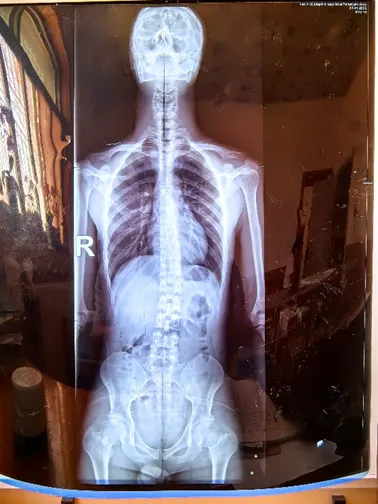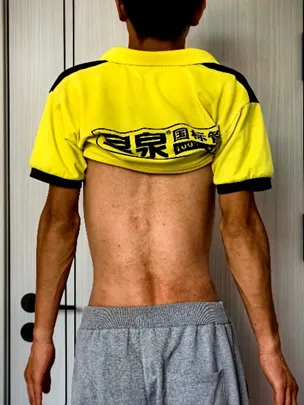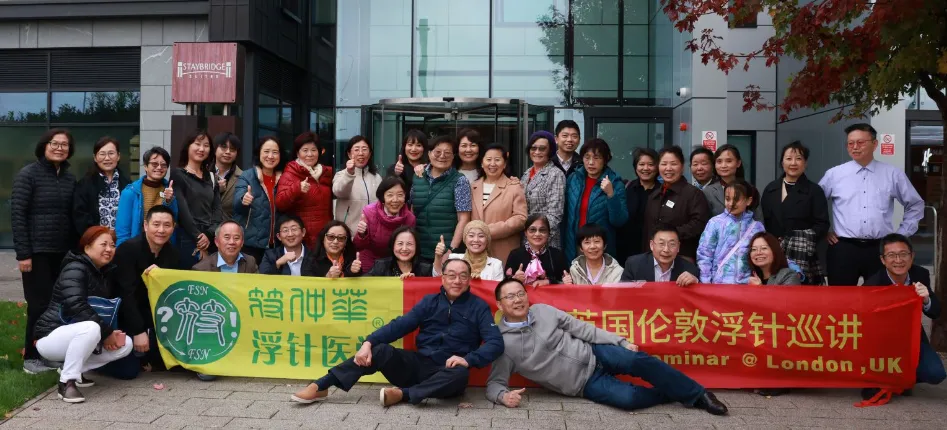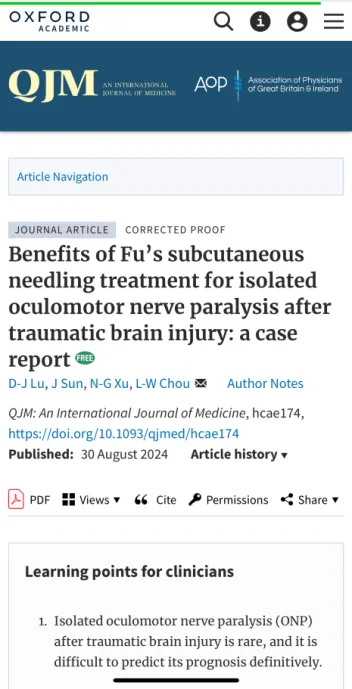The development of Fu’s Needling began with works such as Fu’s Needling Therapy, Rapid Treatment of Soft Tissue Injuries with Fu’s Needling Therapy, Manual for Treating Pain with Fu’s Needling Therapy, Outline of Fu’s Needling Medicine, New Perspectives on Qi and Blood: Integrating Chinese and Western Medicine Based on Fu’s Needling, and The Theory and Practice of Qi and Blood Manipulation. It has now evolved into Summary of Muscle Studies: Exploring Fu’s Needling Diagnosis and Treatment Practices. Each of these works reflects the diligent efforts and wisdom of the author, Professor Fu Zhonghua. They unveil the physiology and pathology of the human body from a unique perspective—muscle studies—thus revealing a thin layer of mystery in the history of human medicine. This approach aims to “bring acupuncture, rich in traditional Chinese wisdom, onto the global stage of muscle studies, leading it into the future.”
From initially using Fu’s Needling as a treatment method to ongoing clinical exploration and summary, it has now become a discipline known as “Fu’s Needling Medicine.” In clinical practice, I use Fu’s Needling daily to provide exclusive treatment for various difficult conditions. The advantages of Fu’s Needling—quick effectiveness, wide range of indications, painlessness, non-invasiveness, safety, and absence of side effects—unfold in remarkable ways. In the midst of lighthearted conversations, I relieve patients of their ailments while promoting Fu’s Needling, earning their trust and friendship in the process.
Now, let’s explore the remarkable results of Fu’s Needling treatment through the cases of two patients with scoliosis.
Case 1
脊柱侧弯年几何,腰背不适受折磨
郑州花掉五万许,今朝浮针小调和
Patient: Guo, Male, 26 years old, Prison Guard.
Phone: 1533336××72, from Botou City.
Date of First Visit: March 18, 2024.
Symptoms: Discomfort, tightness, and stiffness in the lower back for one year, with scoliosis.
Present Medical History: The patient has experienced discomfort, tightness, and stiffness in the lower back for the past year and has visited several hospitals in the local area for treatment, all with unsatisfactory results. On November 30, 2023, imaging showed “scoliosis” (see Figure 1). The patient’s history of scoliosis is unclear. After researching online, he sought treatment in Zhengzhou, Henan, spending over 50,000 yuan; however, there was no significant improvement. Instead, the treatment involving blunt dissection led to pain and discomfort in the left hip and sacroiliac area. Upon returning home, he was referred to me for treatment by an inmate under his jurisdiction.
Past Medical History: Generally healthy, engages in regular physical exercise, has a five-year history of smoking, and is unmarried.
Fu’s Needling Specialized Muscle Examination: Left erector spinae, bilateral quadratus lumborum, left gluteus medius.
Diagnosis: 1. Scoliosis 2. Lumbar myofascial syndrome
Fu’s Needling Treatment Process:
First Visit: March 18, 2024.
Using the single-use Fu’s Needling developed by Professor Fu, precise treatment was applied to the affected muscles. The patient immediately exclaimed, “I have never felt such relief in my lower back and back in the past year; the pain in my left hip and sacroiliac region has decreased by 80%.”
Medical Advice: Rest in bed at home, perform Qi and Blood exercises once in the morning and once in the afternoon, avoid maintaining one position for too long, refrain from using electronic devices, and avoid smoking and spicy or irritating foods. Follow-up appointment scheduled for tomorrow.
Second Visit: March 19, 2024.
Patient Report: The symptoms today are the same as after yesterday’s treatment, with no recurrence.
Affected Muscles: Left erector spinae, bilateral quadratus lumborum, left gluteus medius, bilateral rectus abdominis, bilateral psoas major, right external oblique.
Treatment: Using the single-use Fu’s Needling developed by Professor Fu, treatment was applied to the affected muscles with significant sweeping motions, accompanied by corresponding reperfusion activities. The patient immediately felt the discomfort, tightness, and stiffness in the lower back and back disappear, and the pain in the left hip and sacroiliac region was also resolved.
Medical Advice: Same as before.
Third Visit: March 20, 2024.
Patient Report: The patient reports slight tightness and stiffness in the lower back and back.
Affected Muscles: Bilateral pectoralis major, bilateral rectus abdominis, bilateral erector spinae, bilateral quadratus lumborum, bilateral gluteus medius, bilateral gastrocnemius.
Treatment: Using the single-use Fu’s Needling developed by Professor Fu, treatment was applied to the affected muscles with significant sweeping motions, accompanied by corresponding reperfusion activities. The symptoms immediately disappeared.
Medical Advice: Same as before.
Fourteenth Visit: May 31, 2024.
Patient Report: After thirteen treatments, the symptoms have not recurred. A recent X-ray taken locally showed that the spine is nearly normal (see Figure 2).
Affected Muscles: Bilateral rectus abdominis, bilateral erector spinae, bilateral gluteus medius.
Treatment: Fu’s Needling for consolidation therapy on the affected muscles.
Medical Advice: Do not maintain one position for too long while at work. Perform Qi and Blood exercises once in the morning and once in the afternoon, avoid using electronic devices, and the treatment is now concluded. If there is any discomfort, feel free to come for a visit at any time.


Case 2
脊柱弯弯,疼痛不堪
浮针点点,对比看看
Zhao, Male, 36 years old, Farmer.
Phone: 1853364××12, Xiaoliuzhuang Village, Dacheng County.
Date of First Visit: June 19, 2024.
Symptoms: Lower back pain and scoliosis for three days.
Present Medical History: Three days ago, the patient twisted his lower back while lifting heavy objects, immediately experiencing lower back pain and being unable to stand. A coworker took him to a nearby hospital, where the doctor diagnosed a soft tissue strain and prescribed oral pain medication (specific medication not mentioned). Over the past three days, the pain has somewhat alleviated with oral medication and bed rest, allowing him to stand; however, his spine is now curved (see Figure 3). The patient has limited range of motion for forward bending, backward extension, lateral flexion, and rotation. He was referred for today’s visit by others.
Past Medical History: Generally healthy, engaged in construction work for 8 years, with a smoking history of over 10 years.
Fu’s Needling Specialist Muscle Examination: Bilateral rectus abdominis, bilateral psoas major, bilateral erector spinae, bilateral quadratus lumborum.
Diagnosis: 1.Scoliosis 2. Soft tissue strain of the lower back.
Fu’s Needling Treatment Process:
First Visit: June 19, 2024.
Using the single-use Fu’s Needling developed by Professor Fu, treatment was applied with significant sweeping motions to the affected muscles, while corresponding reperfusion activities were performed based on the functional anatomy of the affected muscles. Immediately, pain was alleviated by 50%, scoliosis significantly improved, and lumbar mobility noticeably enhanced compared to before treatment.
Do not maintain one position for too long while at work. Perform Qi and Blood exercises once in the morning and once in the afternoon, avoid using electronic devices, and the treatment is now concluded. If there is any discomfort, feel free to come for a visit at any time.
Second Visit: June 20, 2024.
Patient Report: The lower back pain has decreased by 70%, with significantly improved mobility compared to the first treatment, and the lumbar scoliosis has noticeably improved since the first visit.
Affected Muscles: Bilateral erector spinae, bilateral rectus abdominis, bilateral psoas major, right external oblique.
Treatment: Utilizing the single-use Fu’s Needling developed by Professor Fu, targeted treatment was applied to the affected muscles. Immediately, the lower back pain was alleviated by 90%, mobility was somewhat limited, and the spine appeared nearly normal.
Medical Advice: Same as before.
Third Visit: June 21, 2024.
Patient Report: The lower back pain has disappeared, with only a slight discomfort. The patient can move freely, and the spine appears nearly normal.
Affected Muscles: Bilateral erector spinae, bilateral quadratus lumborum, right gluteus medius, bilateral rectus abdominis, bilateral psoas major, right external oblique.
Treatment: Utilizing the single-use Fu’s Needling developed by Professor Fu, targeted consolidation treatment was applied to the affected muscles. Immediately, the discomfort in the lower back disappeared, mobility improved, and the spine appeared nearly normal (see Figure 4).
Medical Advice: Same as before. Treatment has been successful; the patient is advised to come for a consultation at any time if there is discomfort.


Treatment Discussion
The causes of scoliosis can be both congenital and acquired. Congenital factors refer to
Congenital developmental factors mainly refer to scoliosis caused by congenital abnormalities of the spine, commonly seen in conditions like congenital hemivertebrae.
Acquired factors mainly include the following aspects:
①Long-term poor sitting posture can lead to an imbalance in the muscle strength on both sides of the spine, resulting in spinal scoliosis.
②In infancy and early childhood, insufficient intake of vitamin D and calcium can lead to rickets, which may also present with significant symptoms of spinal scoliosis.
③Secondary factors due to other diseases, such as tuberculosis of the thoracic spine and pleurisy, can lead to destruction of the spinal bone and instability, resulting in spinal scoliosis.
④Due to high falls or car accidents, the spine may suffer severe trauma, leading to deformity during the healing of spinal fractures. This can result in significant symptoms of spinal scoliosis.
The author particularly treats adolescent scoliosis more during winter and summer vacations. The duration of the medical history for these adolescents is often unclear, and scoliosis is typically diagnosed through further imaging tests after being identified as having varying degrees of deformity during school health screenings.
Clinically, through the use of floating needle therapy for treating scoliosis and related discomfort, it has been observed that “regardless of the duration of the patient’s scoliosis history, as long as congenital scoliosis deformities, pathological changes in bone quality, and scoliosis caused by proliferative osteoarthritis are excluded, floating needle therapy can be used to improve ischemic affected muscles that are tense, stiff, hard, and sliding, resulting in satisfactory outcomes.”
This article presents two typical cases: one of scoliosis caused by discomfort in the lumbar and back regions, and another of scoliosis resulting from acute low back strain pain, for the readers’ reference only.








Leave a Reply